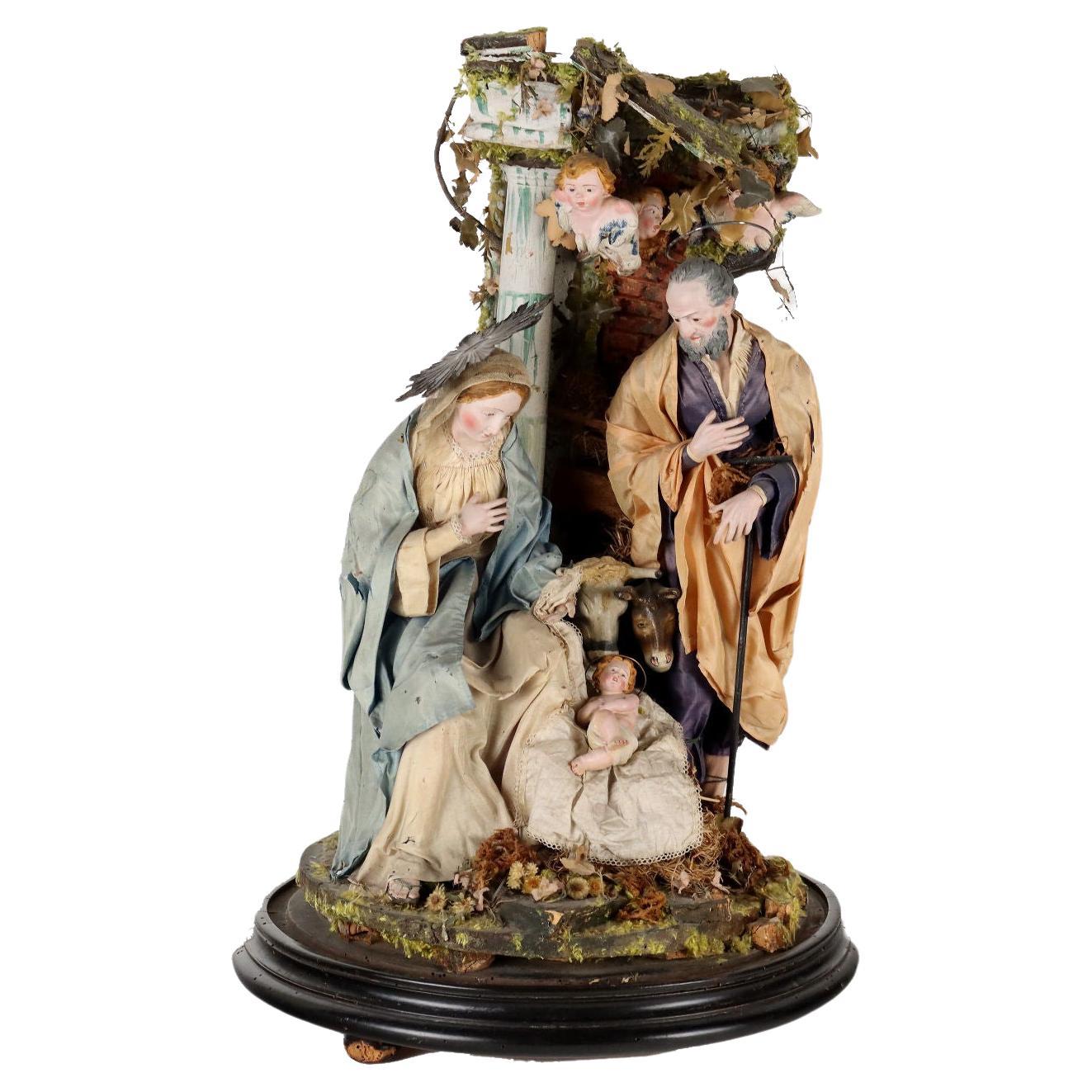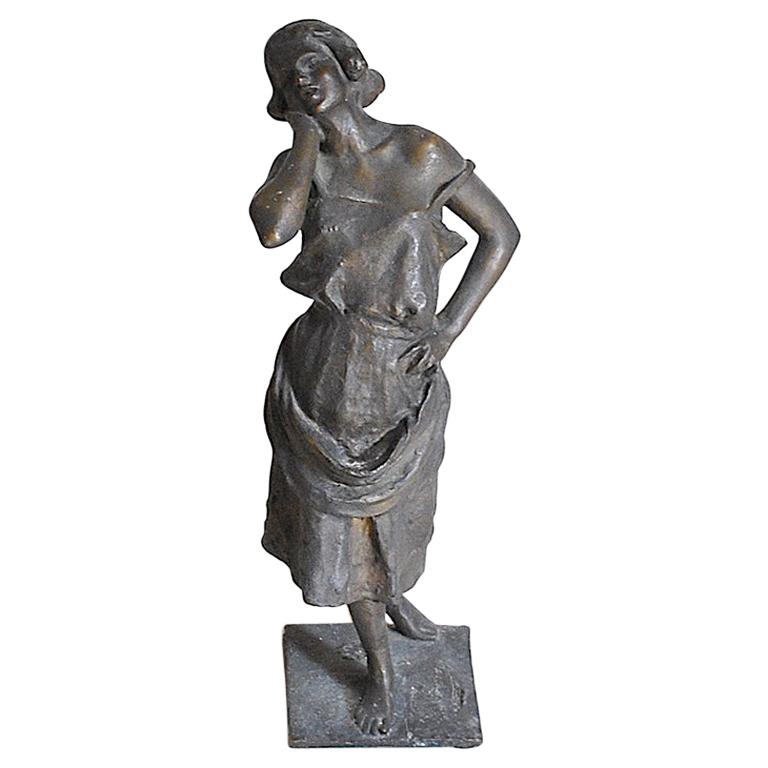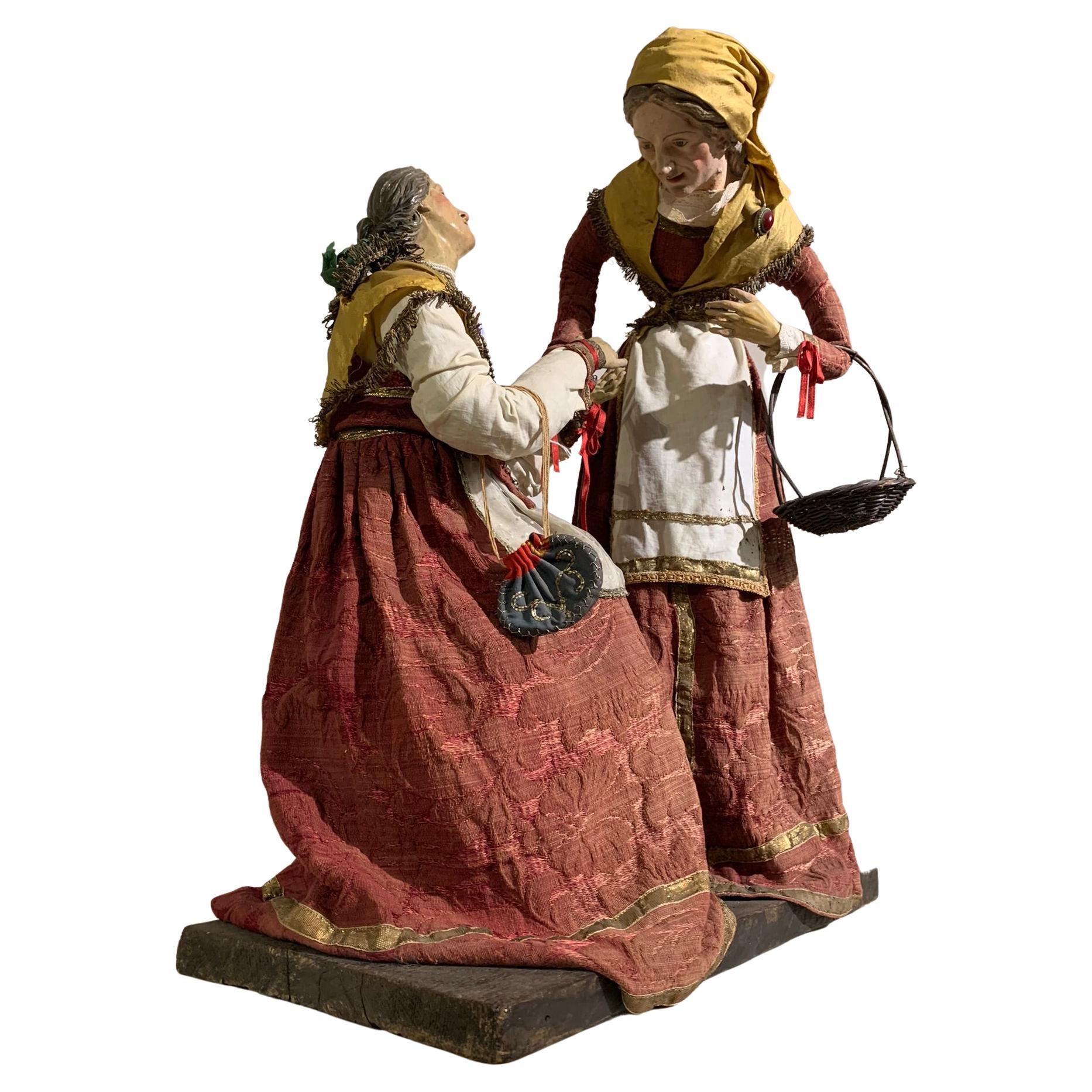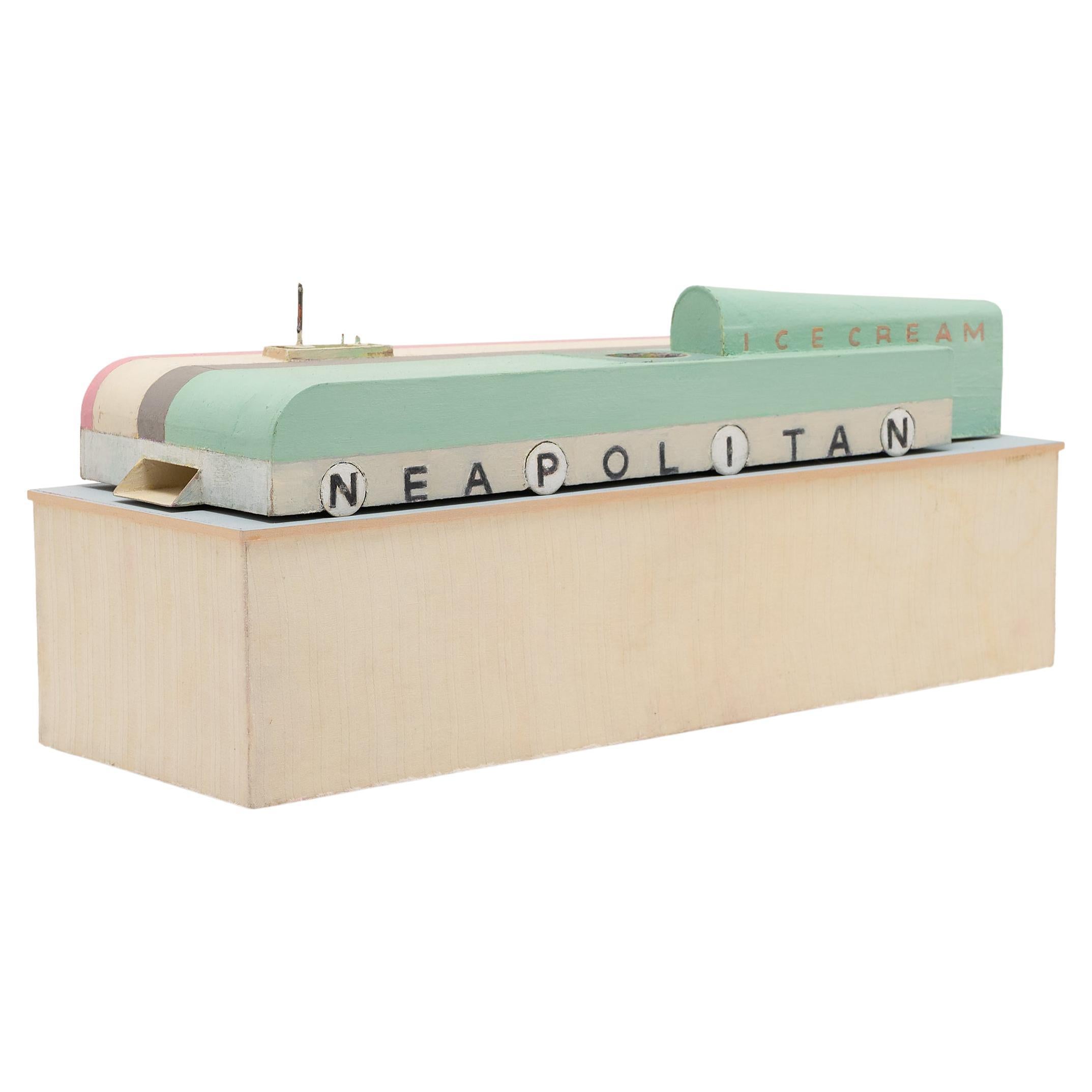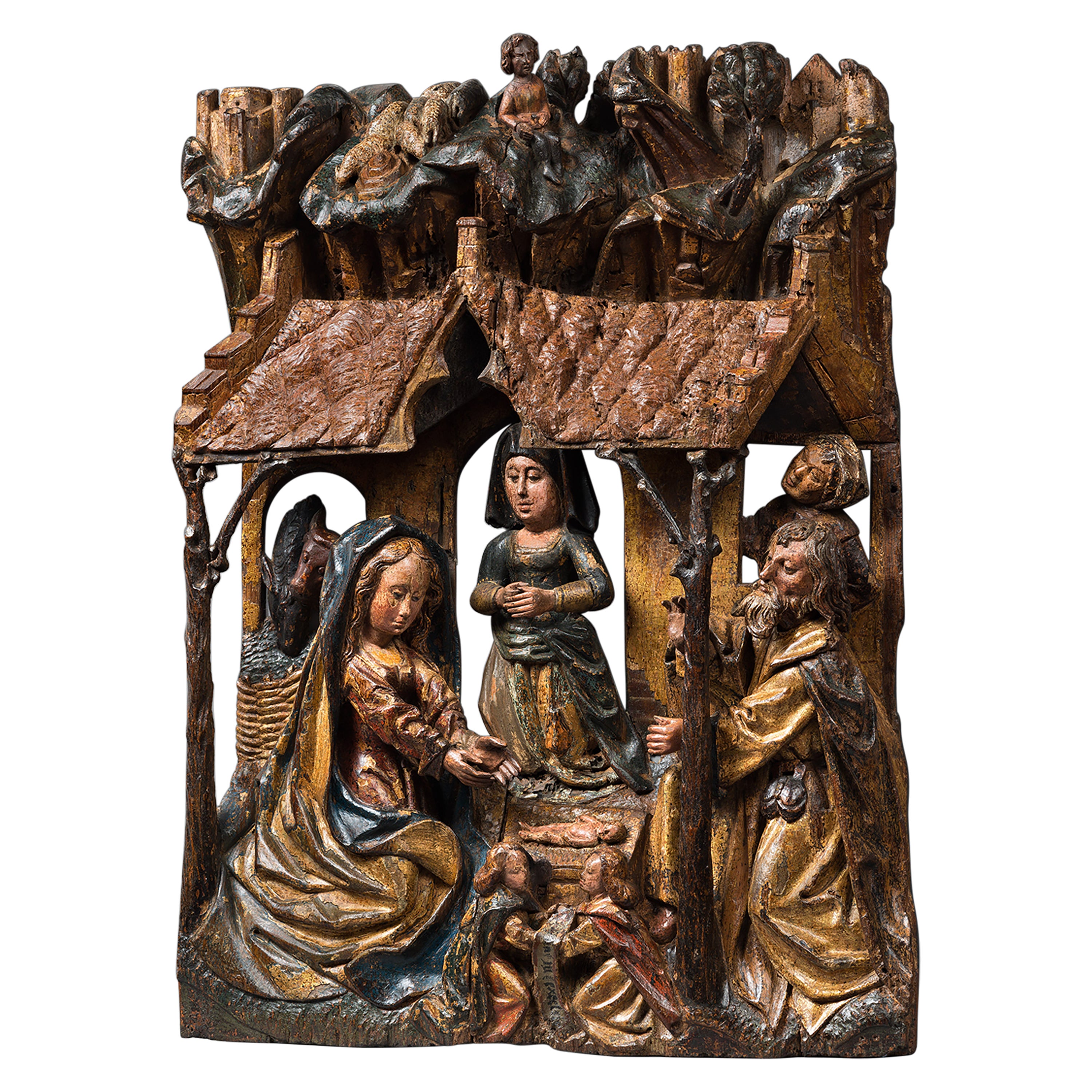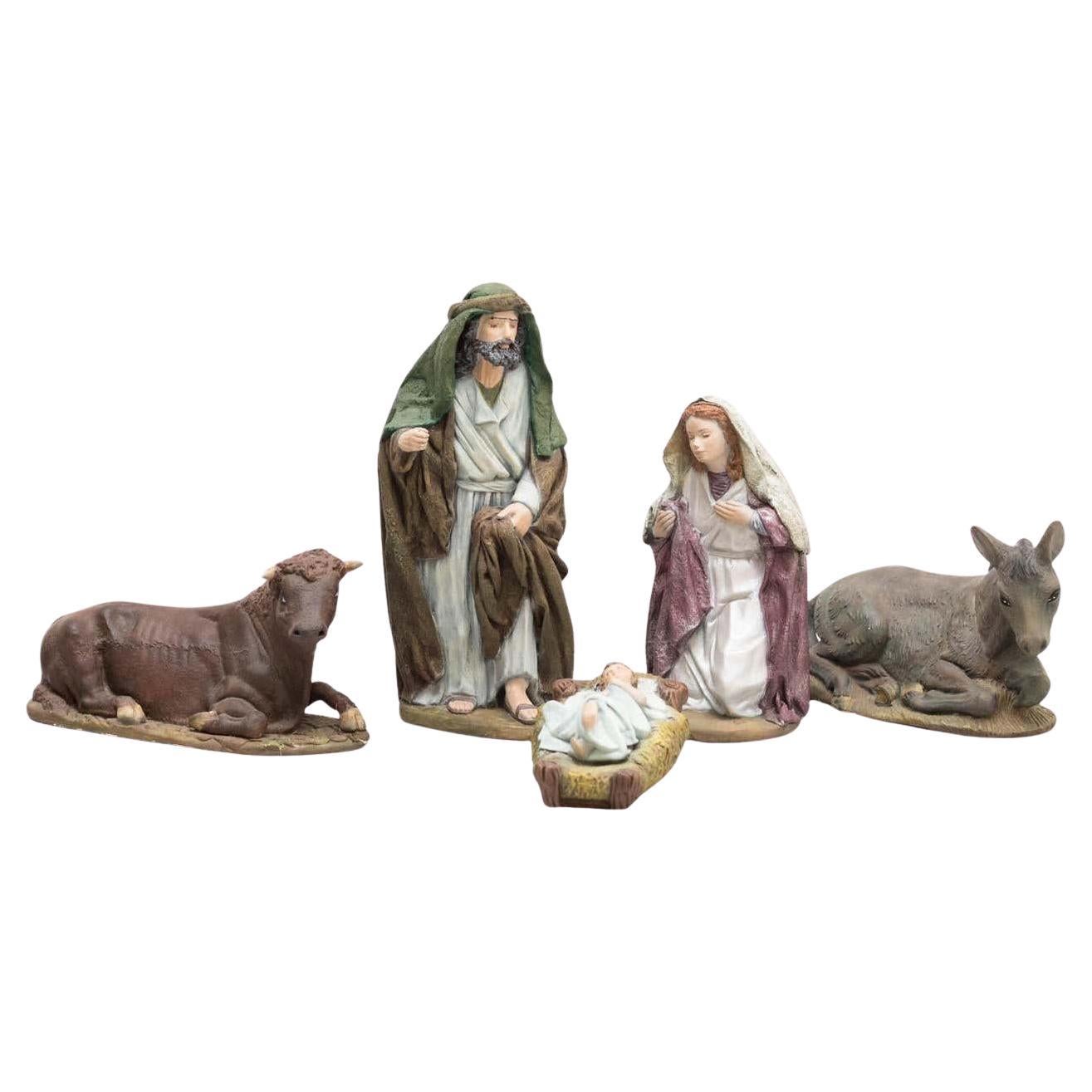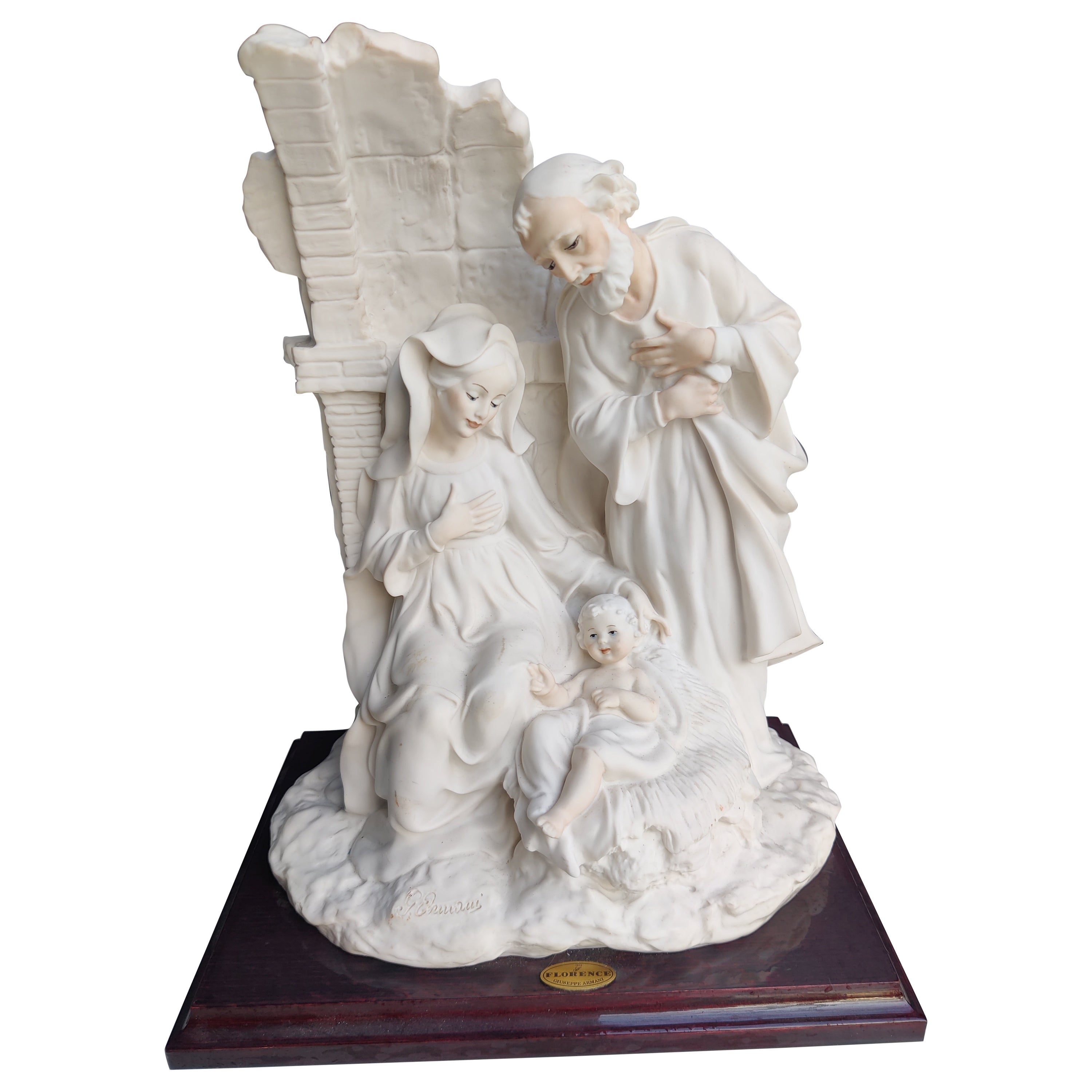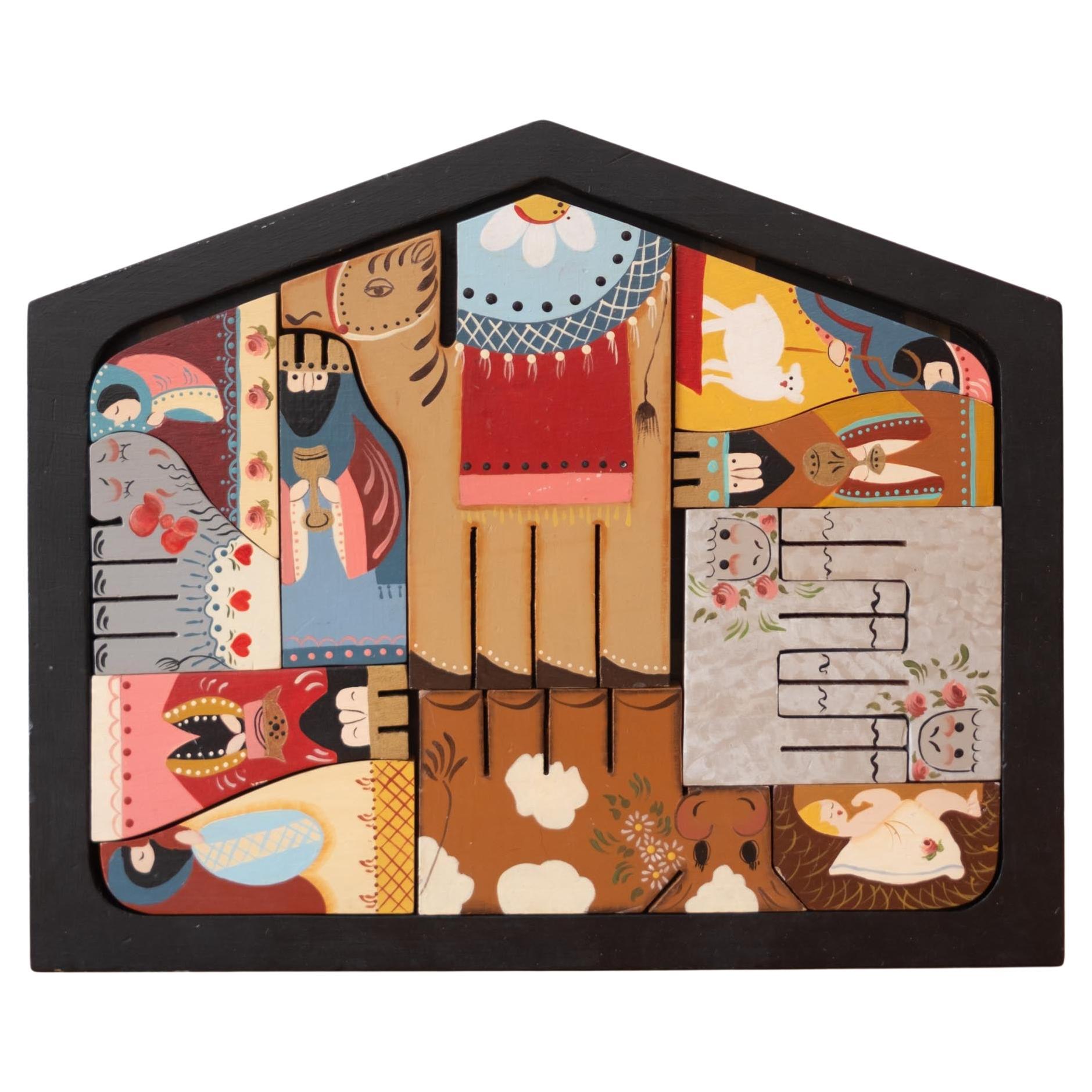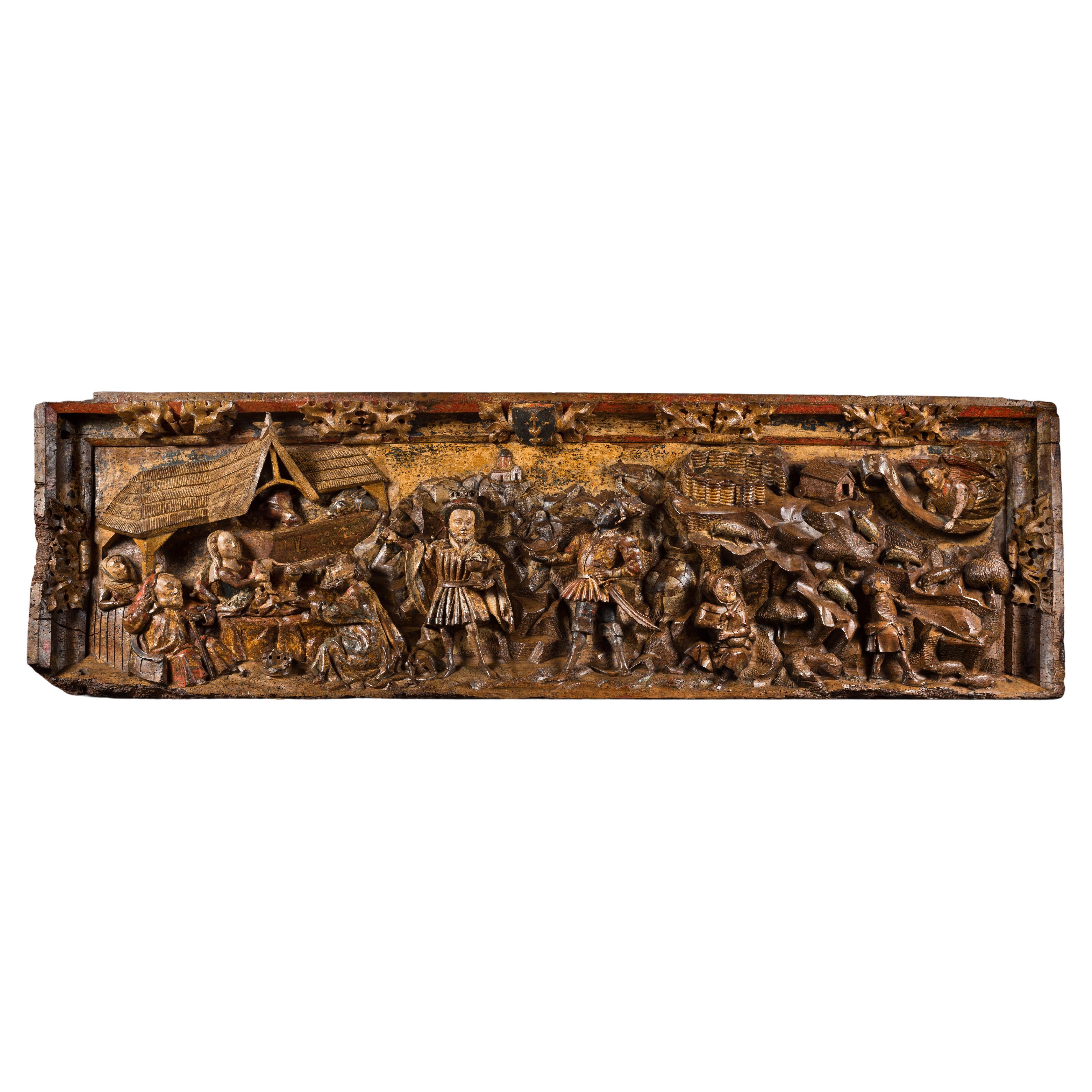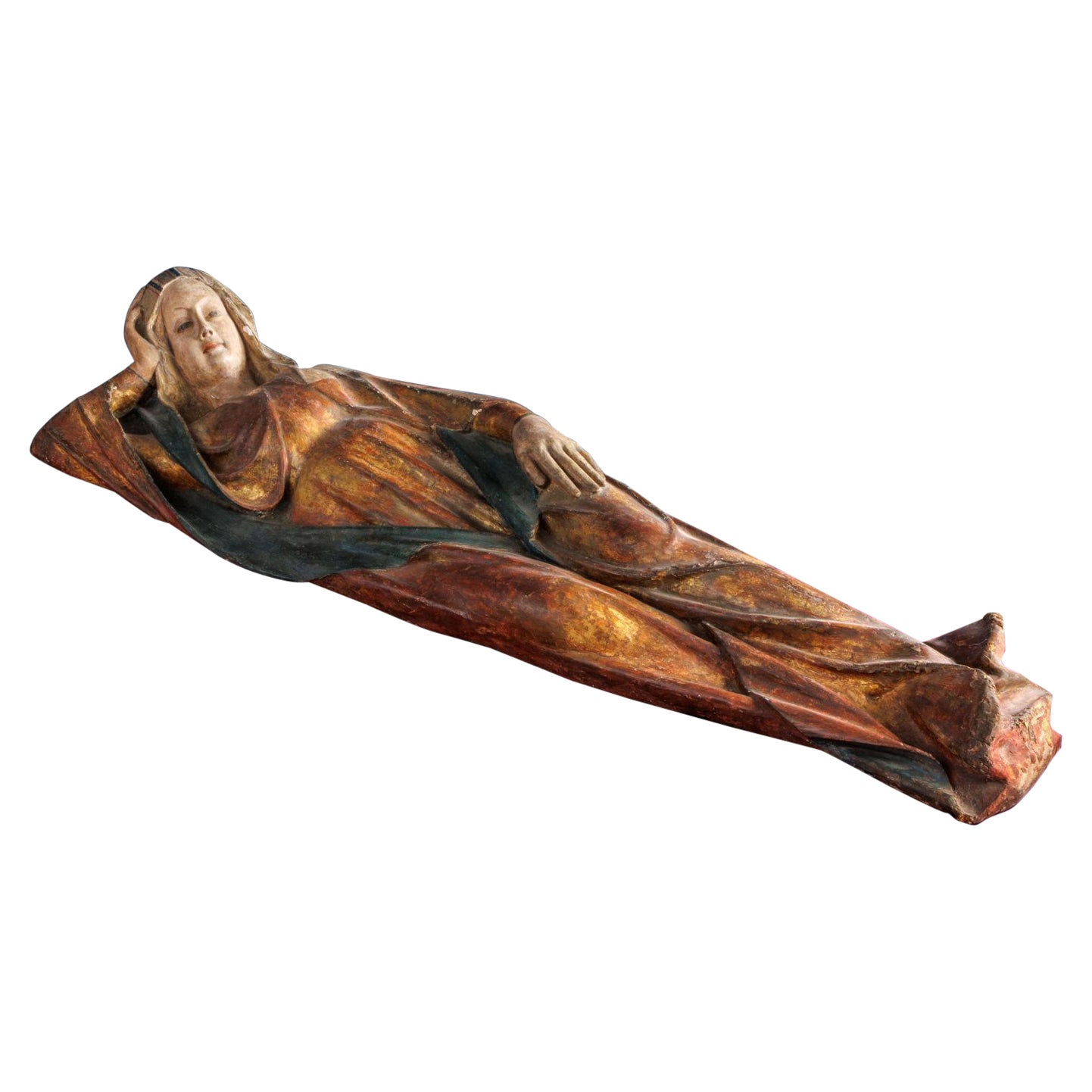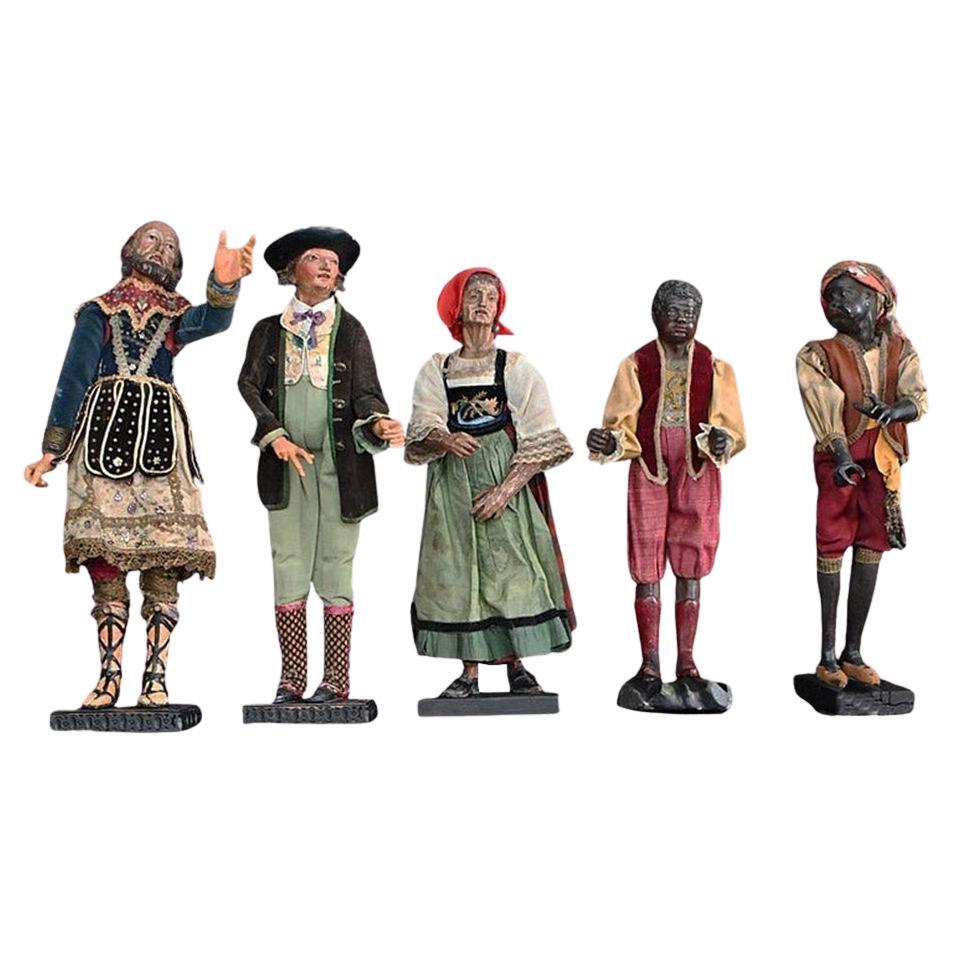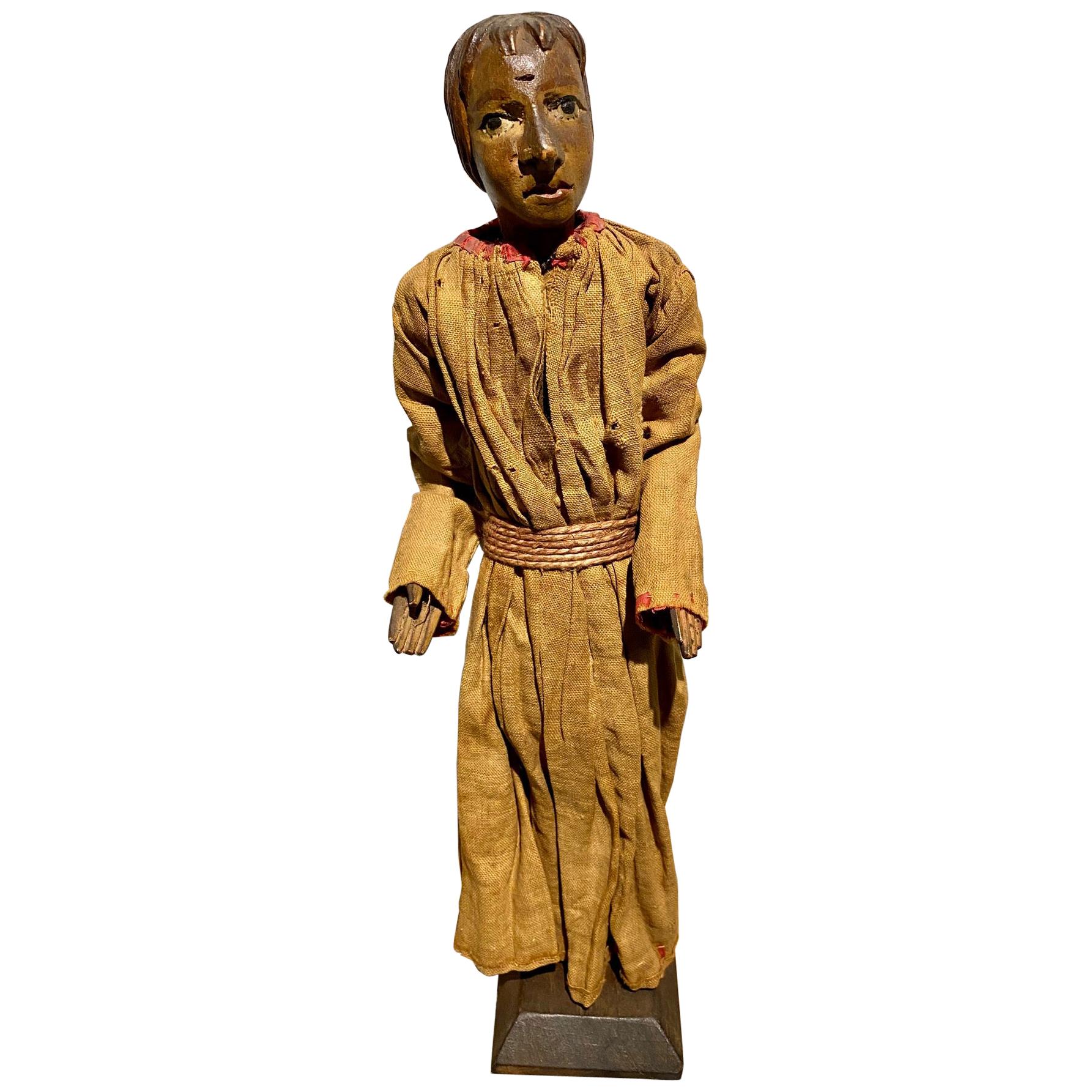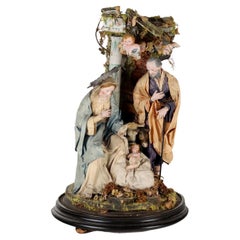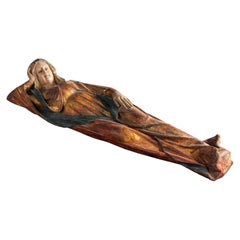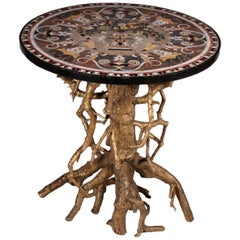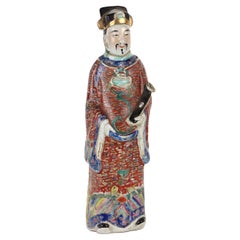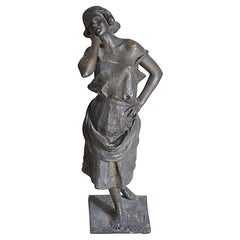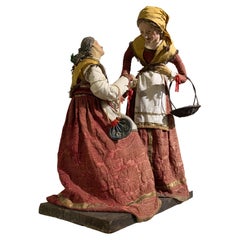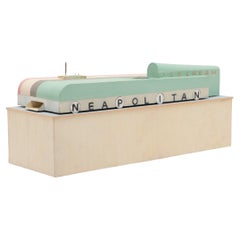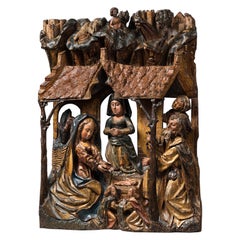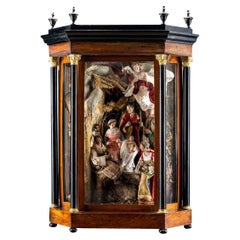
Neapolitan Nativity
View Similar Items
Want more images or videos?
Request additional images or videos from the seller
1 of 10
Neapolitan Nativity
About the Item
- Dimensions:Height: 46.66 in (118.5 cm)Width: 33.47 in (85 cm)Depth: 20.48 in (52 cm)
- Style:Other (Of the Period)
- Materials and Techniques:
- Place of Origin:
- Period:
- Date of Manufacture:1800s
- Condition:Wear consistent with age and use.
- Seller Location:Milano, IT
- Reference Number:1stDibs: LU1721226542522
About the Seller
4.9
Gold Seller
Premium sellers maintaining a 4.3+ rating and 24-hour response times
Established in 2015
1stDibs seller since 2015
422 sales on 1stDibs
Typical response time: 4 hours
Authenticity Guarantee
In the unlikely event there’s an issue with an item’s authenticity, contact us within 1 year for a full refund. DetailsMoney-Back Guarantee
If your item is not as described, is damaged in transit, or does not arrive, contact us within 7 days for a full refund. Details24-Hour Cancellation
You have a 24-hour grace period in which to reconsider your purchase, with no questions asked.Vetted Professional Sellers
Our world-class sellers must adhere to strict standards for service and quality, maintaining the integrity of our listings.Price-Match Guarantee
If you find that a seller listed the same item for a lower price elsewhere, we’ll match it.Trusted Global Delivery
Our best-in-class carrier network provides specialized shipping options worldwide, including custom delivery.More From This Seller
View AllGreat Neapolitan Nativity Scene Ancient Architectural Capriccio '800
By Non-Standard Furniture and Lighting
Located in Milano, IT
On a round base is placed the nativity composed of the Holy Family with the ox and donkey, three cherubim fly to heaven. The seated Madonna and St. Joseph standing turn an adoring ga...
Category
Antique Early 1800s Italian Other Figurative Sculptures
Materials
Terracotta, Silk, Wood, Cork
Virgin of the Nativity. Sculptor active in the Adriatic area, early 15th century
By Non-Standard Furniture and Lighting
Located in Milano, IT
Polychrome wooden sculpture depicting the lying Madonna, also called the Virgin of the Nativity. Mary is reclining, her right hand supporting her head, while her left hand is outstre...
Category
Antique 15th Century and Earlier Italian Other Figurative Sculptures
Materials
Wood
Neapolitan Commesso Table
Located in Milano, IT
The support consists of a structure made using a central trunk that serves as a balustrade, assembled together with other branches of smaller size; completely golden. The round top i...
Category
Antique 19th Century Italian Other Tables
Materials
Marble
$13,977
Lu Xing Porcelain Figur China XX Century, China Period of the Republic 1925-1935
Located in Milano, IT
Lu Xing porcelain figure depicted in a long and rich robe and holding a Ruyi scepter in his left hand. The statue is decorated with polychrome enamels with a w...
Category
20th Century Chinese Other Figurative Sculptures
Materials
Porcelain
Pair of Maison Jansen Style Sculptures
Located in Milano, IT
Pair of brass sculptures with flowers and leaves. In the manner of Maison Jansen.
Category
Vintage 1970s Italian Other Abstract Sculptures
Materials
Brass
$3,145 / set
Bust of Baron Antonio Negri
Located in Milano, IT
Bust of a nobleman in white marble signed and dated 1837. The portrayed is the Baron Antonio Paolo Negri. The bust has a celebratory character, as per the customs of the time and the...
Category
Antique 19th Century Italian Other Busts
Materials
Marble
$22,714
You May Also Like
Female Sculpture in Bronze from the Neapolitan School
Located in bari, IT
La Paesana bronze statuette Neapolitan school, early 1900.
Category
Antique Early 1900s Italian Other Figurative Sculptures
Materials
Bronze
18th Century, Napolitan Nativity Sculptures
Located in Firenze, FI
Beautiful pair of large church crib sculptures in wood and painted terracotta with glass eyes depicting a peasant girl helping a beggar woman, typical Nea...
Category
Antique Late 18th Century Figurative Sculptures
Materials
Terracotta, Wood
$1,863 / set
"Neapolitan Car" by Patrick Fitzgerald
By Patrick Fitzgerald
Located in Chicago, IL
To Chicago-based artist Patrick Fitzgerald, his miniature car sculptures are a means of traveling through time. Born from a fascination with the soap box derby...
Category
21st Century and Contemporary American Figurative Sculptures
Materials
Wood, Paper, Fabric
Late 15th Century Polychrome Wood Carving Depicting the Nativity
Located in Saint-Ouen, FR
While the birth of Christ is briefly told in the Gospel of Luke (2, 7) it is in the apocryphal texts that we find most of the elements and details that have then inspired artists. As of the 14th century and even more of the 15th century the subject of the Adoration of the Child replaces in Western art the scene of the Birth, much favoured in Byzantine art. Instead of being depicted lying with the new-born swathed in the manger, the Virgin is now kneeling, her hands joined in prayer in front of the naked child. This change was probably hastened by the popularity of the visions of Saint Bridget of Sweden to whom the Virgin allegedly appeared to show how she had given birth to Jesus (Visions, VII, chap. 21).
Sheltered by a thatch-roofed structure the Virgin is kneeling in front of the Child Jesus. She wears a magnificent red dress under a large gold cloak. Her curled blond hair is partially veiled. The newborn is lying on a straw mat. Joseph is depicted with a parted beard and stands opposite from the Virgin. He wears a tunic and a coat with a purse hanging from the belt. His costume reminds us of the long journey him and Mary have accomplished to reach Bethlehem.
Two other women are present. One is looking through the stable’s window to observe the Holy Family while another one kneels in prayer in front of the divine child. The rich costume of the lady might indicate she is a donator.
However they could also both represent the women who took part in the birth of Christ, Zelemi and Salome. Salome, incredulous did not believe in the virginal conception of Mary and she is represented far from the scene. The artist has depicted her with an expression of doubt on her face. Zelemi, on the contrary, is a believer. She is rewarded by a place of honour at the heart of the scene, close to Mary.
To the left the donkey and ox that have accompanied Mary and Joseph to Bethlehem observe quietly the scene.
On the foreground two angels hold a scroll reading an excerpt from the Gloria : “/Gloria/ in excelsis /Deo/.” One of the angels wears a blue cape while the other’s is red Those two colours are very significant as during Middle-Ages blue symbolises hope and red charity. Together they express the hope in redemption thanks to the advent of Christ and his sacrifice to come.
Above the main scene, up a cliff, a small shepherd lets his herd of sheep graze amidst the trees. He is framed by two walled cities.
This wood carving is the work of a very skilled and inventive artist. The piece bears witness to his exceptional talent. The realism of the scene is emphasised by the amount of details depicted. The refinement of the carving itself is highlighted by the well preserved polychromy.
This key moment of the New Testament is set in a contemporary context thanks to the clothes of the characters and the scenes of rural life. The universal dimension of the scene is intensified while allowing contemporary viewers to grasp its meaning more easily.
This care for details, the picturesque realism as well as the extraordinary rendition of the cloths suggest it was made by a Flemish artist during the late 15th century.
This relief can be compared with the panel of the Nativity from the Saint-Vaast altarpiece made by Jacques Daret between 1433 and 1435, today in Madrid’s Thyssen-Bronemisza Museum.
Literature
Louis Réau, Iconographie de l’Art chrétien...
Category
Antique 15th Century and Earlier Dutch Gothic Figurative Sculptures
Materials
Wood
Set of 5 Vintage Nativity Scene Figures, Handcrafted in Barcelona, 1960
Located in Barcelona, ES
Set of 5 Vintage Nativity Scene Figures, Handcrafted in Barcelona, 1960 – Traditional Spanish Art in Plaster.
Add a charming touch of traditional craftsmanship to your collection wi...
Category
Vintage 1960s Spanish Mid-Century Modern Busts
Materials
Plaster
$602 Sale Price / set
20% Off
"The Nativity" Italian sculpture signed by Giuseppe Armani
Located in Cincinnati, OH
"The Nativity" Italian sculpture signed by G. Armani
The piece is mounted on a wood base with a brass plate "G. Armani"
The back is marked 1983 Florence and also an "N" with a crown ...
Category
Vintage 1980s Italian Figurative Sculptures
Materials
Porcelain, Wood
$556 Sale Price
20% Off
Recently Viewed
View AllMore Ways To Browse
Antique Nativities
Wood Nativity
Antique Nativity Scene
Terracotta Angel
Papier Mache Vase
Antique Italian Nativity
Paper Mache Vase
Italian Paper Mache Sculpture
Neapolitan Angel
Paper Mache Cabinet
Paper Mache Angel
Papier Mache Angel
Articulated Man
Austrian Swords
Dior Helmet
Enamel Camel
Ernest Carrier Belleuse Terracotta
Figurine Poland
